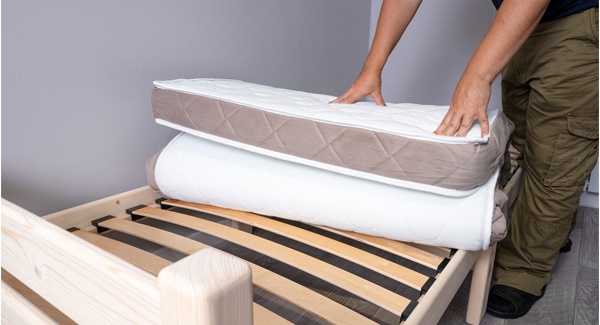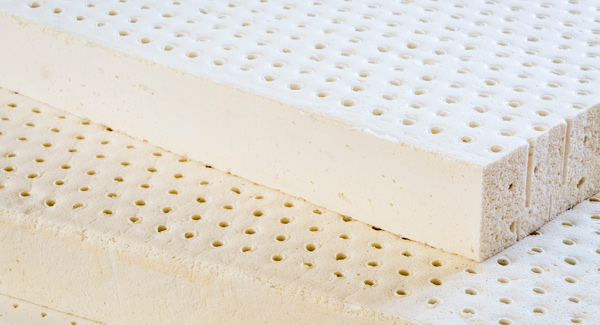Home » Bed shopping » Why Are Mattresses So Expensive
That’s too much: Why are mattresses so expensive?
Article navigation
- Tony Brown
If you’re in the market for a new mattress, you’re probably wondering why they all seem so expensive. The average lifespan of a mattress is between 6 and 8 years. Some people may even keep their mattresses for longer. So when it’s time for a replacement, a decade or two may have passed.
Prices naturally increase over time, and as we rarely shop for mattresses, the chances are you probably won’t remember how much you paid for your old one. So when your old mattress is past its best, the cost of a replacement may take you by surprise.
Mattresses go through an extensive manufacturing process. This can include forming the spring unit, attaching the border rods, creating the coverings, securing the fillings and sewing on handles and labels.
Unless you visit a mattress factory, you don’t get to see what’s inside the mattress and the amount of effort and skill that goes into the manufacturing process.
Here are some of the reasons why mattresses are seen as expensive.
The importance of sleep is undervalued
The importance of a good night’s sleep is often undervalued. Many people would prefer to invest in a new car or a holiday instead of a new mattress. Perhaps one of the reasons for this is that our bedrooms are private places, so showing off a new bed to friends and family may not have the same appeal as a new car.
Over recent years, the mattress industry has been criticised for not doing more to help customers understand why mattresses are priced the way they are. One way they can achieve this is to reinforce the benefits of a quality mattress.
The mark-up on mattresses
A common misconception is that mattresses come with a hefty mark-up. This leaves many people sceptical about buying a new mattress through fear of getting ripped off.
But the mark-up on mattresses is in line with other products, such as clothing and electrical items. It stands to reason that stores and manufacturers need to make a profit to cover costs like rent, labour, materials, shipping, and after-sales costs.
Brick-and-mortar stores with a physical showroom will have more considerable overheads than online stores. They will typically add more mark-up to mattresses. But this may also give them slightly more wiggle room on prices, which means you could negotiate a better deal with the store.
Rising costs of raw materials
Many manufacturers buy components and raw materials for their mattresses from third-party suppliers. Organic and natural materials will usually cost more, as will the amount of steel or type of spring unit required to produce the mattress.
Over recent years, mattress prices have risen due to the increased costs of raw materials and their lack of availability.
In particular, Brexit and the coronavirus pandemic have led to a shortage in raw materials like springs, fabrics and foams. This has fuelled demand and forced manufacturers to pay hefty prices for materials. As raw material costs rise, manufacturers are forced to pass on these costs to customers.
The impact of wage costs on mattresses
Besides raw materials, the other substantial cost for mattress manufacturers is labour. The United Kingdom and the United States have a relatively higher minimum wage than many other countries. These costs are usually passed on to customers.
It would be difficult for mattress manufacturers to outsource the work overseas even though the labour would be cheaper. There are several reasons for this. Firstly, some of the components and raw materials may be locally sourced. Shipping the components to an overseas factory to build the mattresses could present several logistical challenges.
Secondly, mattress making is a highly skilled task that can take years of experience to master. There may be a shortage of these skills overseas, and outsourcing may result in poorer quality.
Finally, many mattresses can be made in a variety of options. These can include a choice of soft, medium and firm spring tensions, as well as a selection of coverings. Shipping can be expensive. Shipping containers would need to be filled with mattresses to make it cost-effective for the manufacturer, resulting in longer delivery times.
Many retailers have regular deliveries in place with local mattress suppliers. This means that made-to-order mattresses can be delivered faster and cost-effectively than shipping overseas.
Be wary of fake mattress prices
Be wary of retailers that offer huge discounts off ‘normal’ prices. These price promotions mislead people into thinking they are getting a bargain by artificially inflating the normal price.
Are more expensive mattresses worth the money?
Inside every mattress are vast amounts of materials like steel, foam, latex, polyester, cotton and wool. These materials provide a comfortable and supportive foundation for sleeping.
But not all mattresses are made equal. Whilst they may look similar, there are vast differences in the quality. In general, you get what you pay for. A cheaper mattress can be mass-produced cost-effectively, predominately by machine. It can contain layers of synthetic fillings like polyester or foam.
On the other hand, a more expensive mattress can be made to much higher standards of workmanship.
A feature of a higher-quality mattress is hand-side stitching. This involves stitching the side panels of the mattress to the outer rows of springs, which helps reinforce the mattress edge and extend its sleeping surface. It can take a skilled craftsperson up to 8 hours to complete this task by hand.
Many higher-quality mattresses contain luxurious natural materials, such as wool, cashmere and silk for extra comfort.
The difference in quality is often reflected in the mattress’s lifespan. A cheaper mattress made by a machine may last up to 6 years, while a luxurious, hand-made mattress may last 20 years with correct care.
Ultimately, choosing a mattress comes down to personal choice. It should be comfortable and supportive, but not necessarily the most expensive.
Final thoughts
If you spend £1,000 on a new mattress, that’s only 40p a night over seven years. That’s less than a pint of milk or a loaf of bread! As we frequently buy these commodities, we give little consideration to the price.
We spend a third of our lives in bed. Getting a good night’s sleep can positively impact our health and wellbeing. So consider a new mattress as a worthwhile investment rather than an expensive strain on your finances.
Learn more
Share this article

About the author
Tony Brown is the founder and creator of The Bed Consultant. His career in the bed industry began in 2002. After graduating from university with a degree in Business Administration, Tony joined one of the largest independent furniture retailers in the UK as a bed consultant. Tony has helped thousands of customers find the perfect mattress.





